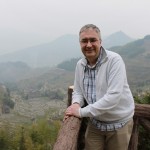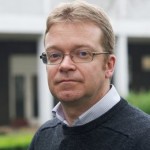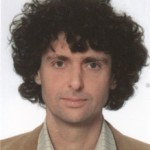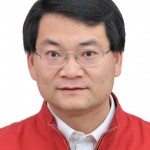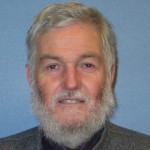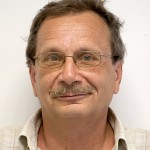 Associated Professor Stanislav Rapant, DrSc.
Associated Professor Stanislav Rapant, DrSc.
Senior geochemist, State Geological institute of Dionýz Štúr, Mlynská dolina 1, 817 04 Bratislava, Slovak Republic
Stanislav is Associated Professor, DrSc., working as senior geochemist at State Geological Institute of Dionýz Štúr, Bratislava, Slovak Republic. He has over 35 year experience in environmental geochemistry. In the last 15 years he has been dealing with the research in the field of medical geology and geochemistry and was in charge of several medical-geochemical projects performed at regional level in the Slovak Republic. Recently, he is a project manager of two projects financed under the EU Life+ programme – GEOHEALTH (LIFE10 ENV/SK/086, http://www.geology.sk/geohealth /? lang=en) and LIFE FOR KRUPINA (LIFE12 ENV/SK/094, www.geology.sk/lifeforkrupina). Both projects are highly innovative and bring new methodological approaches for analysis of a geological environment and human health relationship.
The 31st SEGH Conference in 2015 will be held in Bratislava, the Slovak Republic also on the occasion of the final implementation of the project GEOHEALTH (LIFE10 ENV/SK/086) that financially supports this event.
Project GEOHEALTH aims to analyse and reduce negative impact of geological environment on the health status of residents of the Slovak Republic. The background project information and presentation of its partial results and outputs is published on the project website http://www.geology.sk/geohealth/?lang=en. So far, project team members have actively presented the project results on the following international forums: Aveiro, Portugal 2012 (ISEG), Toulouse, France (SEGH 2013) and Newcastle-upon-Tyne, UK (SEGH 2014). The presentation of Geohealth project results will take place in the scientific programme of the SEGH conference in 2015, including methodology for compilation of datasets of environmental and health indicators from national databases and registries, neural network analysis of environmental and health data, definition of optimum range of chemical concentrations in groundwater and soils in relation to human health.
GEOHEALTH project background information
The main project objective is to link the information on the health status of Slovak residents (health indicators) with the data on geochemical background (environmental indicators) in order to analyse a relationship between geological environment and human health in the Slovak Republic. The dataset of health indicators was compiled based on ICD registry, 10th revision and WHO methodology and consists of health indicators characterizing various causes of deaths at a municipality level (2,883 municipalities in total). The main emphasis is particularly laid on the most common causes of deaths in our country including cardiovascular and oncological diseases (about 75% of all death causes). Other causes of deaths – e.g. diseases of gastrointestinal tract, respiratory diseases and diseases of endocrine system – are also subject to our analysis. The dataset of environmental indicators was compiled at the same municipal level and based on all available geochemical data obtained within the environmental-geochemical mapping programme in the Slovak Republic including groundwater and soils. The compiled datasets of health and environmental indicators provide unified information on health status and geochemical background for the whole Slovak territory at a municipality level. We have created a model of more than 5.5 million of Slovak inhabitants in order to analyse the associations between geochemical environment and human health. Except for standard statistical methods of data analysis (linear, Spearman correlations), we have also used a method of artificial intelligence – neural networks. So far, we have not processed all the data but we have achieved some partial results of our study. These results point out to the fact that there are macro-elements (mainly Ca, Mg, Ca+Mg, Na, K) which report the most significant and decisive influence on human health status of residents. The influence of potentially toxic elements such as As, Pb, Hg, Cu, Cd and others is of a much lower significance than we have supposed earlier. The most common causes of deaths – cardiovascular and oncological diseases – are very closely associated with chemical contents of Ca and Mg in groundwater/drinking water as well as in soils. The municipalities with Ca and Mg deficit in geochemical environment (geochemical background – silicate volcanic, granitic and metamorphic rocks) are characterized by higher occurrence of deaths due to cardiovascular and oncological diseases (often more than 50%) on the contrary to the municipalities with higher contents of both chemical elements in groundwater and soils (geochemical background – carbonates, flysh sediments). In addition, the mean life expectancy of residents living in carbonate geological environment is significantly higher (about 2 – 4 years) than of those living in silicate geological environment.
Project partial results were published as original scientific papers in international magazines and are available together with the information on project progress at http://www.geology.sk/geohealth/?lang=en.
Professor of Environmental Geochemistry, Assistant Dean, Research & Enterprise, School of Science & Sport, University of the West of Scotland, Paisley Campus, Paisley PA1 2BE, UK
Andrew is Professor of Environmental Geochemistry at the University of the West of Scotland. He has over 25 years experience in the assessment and management of pollutant mobility in diverse environments including air, land and sediment contamination and in the bioaccumulation in aquatic and terrestrial systems. He has researched metal mobility in the long term management of wastes from nuclear and metals manufacturing and investigated the impact of regulatory systems including soils policy at the UK national and EU level. More recent projects have included assessment of land quality in urban environments for risk assessment and urban planning and in the evaluation of dispersal mechanisms for pesticides in agroforestry. Human interaction with soils in urban agriculture from a social and risk assessment perspective has become an important issue for urban managers. The work of an EU wide COST Action network in this field brings together a wide range of stakeholders. His presentation will cover some of the primary research undertaken by groups across Europe, to develop an understanding of human behaviour at allotment sites – an important point of tension in our expanding urban ecosystems.
Professor of Geoscience (Applied Geochemistry), School of Environment and Technology, University of Brighton, Lewes Road, Brighton BN2 4GJ, UK
Andy is Professor of Applied Geochemistry at the University of Brighton, UK, and has over 20 years research and consultancy experience in environmental geochemistry, and contaminated land and water management. Recently, his work has focused on the development and practical application of more effective land and water remediation methods, including the use of plant-based (phyto-management) methods which can offer lower deployment costs and combine site risk management with wider sustainability benefits. Andy’s presentation will discuss this phyto-management or “green” remediation approach by drawing on examples from the USA and Europe which illustrate its practical risk management capabilities and the potential wider environmental, economic and social benefits that can be realised. Results from the recent EU GREENLAND project, which was designed to research and overcome the barriers to practical phyto-management application, will be discussed and evaluated to examine how the wider, more effective application of “green” remediation strategies can be realised in the future.
Senior researcher in water hygiene, Head of Department of Water Hygiene of Centre of Environmental Health, National Institute of Public Health, Prague, Czech Republic
Frantisek Kozisek, M.D., PhD., graduated from Medical Faculty of Charles University in Prague in 1987 – as medical doctor with specialization on public health. He has been working at the National Institute of Public Health (NIPH) in Prague, Czech Republic, as researcher and consultant in water hygiene (water and health) since 1990. Currently he is senior researcher and head of the Department of Water Hygiene of Centre of Environmental Health (NIPH). Health risk assessment and legislation relating to drinking and bathing water are main subjects of his work. The specialty in his research is area of so called “biological value of drinking water”, which is focused on nutrients in drinking water and definition of good drinking water which would contribute to human health only in a positive way. He is Czech representative in several committees and expert groups by the European Commission like Article 12 Drinking Water Directive Committee, Expert Group on drinking water, or Expert Group on construction products in contact with drinking water. He is involved in various national and international research projects and teaches environmental health at the Charles University (3rd Medical Faculty) and at the Institute of Postgradual Education in Health Services.
Professor of Environmental Science and Engineering, Guangzhou Institute of Geochemistry, Chinese Academy of Science, Vice-director of Guangdong Key Laboratory of Environmental Resources Utilization and Protection, China
Dr. Taicheng An was born in Gansu, China, in 1972. He received his B.S. in Chemistry from Northwest Normal University in 1996, and his Ph.D degree in 2002 from Zhongshan University, China. Now, he is a professor of Environmental Science and Engineering at Guangzhou Institute of Geochemistry, Chinese Academy of Science, and vice-director of Guangdong Key Laboratory of Environmental Resources Utilization and Protection, China. His research interests include: 1. The transportation mechanisms, fate prediction and health effect of emerging organic contaminants, for example EDCs, PPCPs and BFRs, etc, in the environment, especially the identification of intermediates and their potential decontamination mechanisms in the natural or simulated systems; 2. Characterization, optimization and application of novel environmental friendly materials as well as natural mineral resources in environmental remediation; 3. Applications of various advanced oxidation processes (AOPs), especially heterogeneous photocatalysis for the degradation of organic pollutants and inactivation of pathogens in water and air. He has been published more than 200 peer-received professional papers (including 160 SCI papers) in reputation journals, such as ES&T and Water Res. He is also the holder of total 44 patents including 36 issued. He is the winner of National Natural Science Funds for Distinguished Young Scholars in China, and the excellent Young Scientist Award from many reputation Societies, like Scientific Committee on Problems of the Environment (SCOPE) in 2011, Chinese Society for Mineralogy, Petrology and Geochemistry (Defen Hou Award) and Chinese Society for Environmental Sciences in 2010. Now, he is also served as editorial aboard of Environmental Geochemistry and Health (SCI), Atmospheric pollution Research (SCI) and Recent Patents on Engineering (EI).
Senior researcher in analytical chemistry/geochemistry, British Geological Survey, Environmental Science Centre, Nottingham
Dr. Mark Cave (BSc, ARCS, PhD, MSc, CSci, MRSC, CChem) is a principal scientist at the British Geological Survey. He is an analytical chemist/geochemist with extensive experience in the analysis and interpretation of environmental chemical data with particular reference to geochemistry and human health. He also has an MSc in Applied Statistics (2008). He has at least 80 refereed external publications (h index = 19) and 80 internal BGS reports on analytical method development and data interpretation in environmental applications using multivariate statistical methods. He has developed a novel sequential extraction methodology for identification of the solid phase speciation of potentially harmful elements in soils and sediments using a chemometric modelling technique. He is chairman of BARGE (Bioaccessibility Research Group of Europe), working to develop harmonised protocols for bioaccessibility testing and the production of a soil reference material for in-vitro bioaccessibility measurements. He has specific experience on working on the occurrence and bioaccessibility of polyaromatic hydrocarbons in soils. He has wide experience in investigating the geological controls on the bioaccessibility of naturally occurring arsenic in the UK. Extensive experience in working on the interpretation of geochemical data sets with reference to geogenic and anthropogenic influences. Recently completed projects include work for DEFRA to determine the Normal Background Concentration of Contaminants in Soils in the UK and a Tellus Border Project (EU INTEREGG IVA-funded) to determine sources of diffuse pollution, in soil chemistry data from Ireland. Dr. Cave is a member of the Royal Society of Chemistry, Chartered Chemist and Chartered Scientist, editor of the newsletter and committee member of the International Medical Geology Association and a member of the Society of Environmental Geochemistry and Health.
Medical Consultant in Health Protection and Public Health, Public Health England, Liverpool UK
Alex is a Public Health doctor working in Public Health England (previously the Health Protection Agency), based in Liverpool. He has been interested in environmental interactions with health for over 40 years. He has 30 years active involvement in research and development around iodine deficiency, and over 15 years involvement with the characterisation, investigation, environmental management and public engagement relating to pollution issues of air, land and water and their effect on health and disease. He has worked and consulted in the UK, Pakistan, China and Morocco on these issues. In his current employment he has responsibility for the development of an Environmental Public Health Service that provides a safe and secure response to local and national environmental issues that affect the health of the 2.6 million people of Cheshire and Merseyside in NW England. His vision for this service extends beyond the standard environmental issues such as chemical spills and flooding to environmental links to wider health issues such as obesity, lung and heart disease. His talk will examine trace and essential elements and chemicals, their dietary deficiency and resulting disorders, the constraints of differing paradigms and cultural approaches to the issues, and explore the strengths of multi-disciplinary approaches to resolving problems and improving health.
